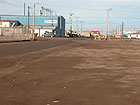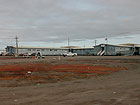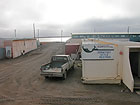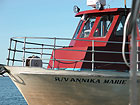

 | |||||||||||||||||
|
|
Journals 2006/2007Kirk Beckendorf
August 27, 2006 It's mid morning when I land at Barrow's miniscule airport, where I am met by Carin. We get in the truck and drive down the dirt road in front of the airport. Barrow is a remote town on the edge of the Beaufort and Chukchi Seas- part of the Arctic Ocean system. A few dirt roads traverse the town and a bit of the surroundings, but no roads lead to Barrow. The only access to town is by plane or boat. Because of sea ice, access by boat is limited from about the end of July through mid October.
It doesn't take long and we are at the Barrow Arctic Science Consortium (BASC) facilities, our base of operations. Carin gives me a quick tour, shows me my "dorm" and introduces me to the team of scientist who I will be working with for the next two weeks. They include Philip Alatalo, Carin Ashjian, Bob Campbell, Aaron Hartz, Steve Okkonen, Barry and Ev Sherr. Their specialties include zooplankton ecologists, microbial and physical oceanography. After lunch we head to the Annika Marie (the research boat on which we will be working). There I am introduced to the captain and crew, Bill and Mike. We spend the next 12 hours or so in Elson lagoon in search of euphausiids. Often called krill these zooplankton are one of the bowhead whales' main food sources. As Bob Campbell, a zooplankton ecologist from the University of Rhode Island explains to me, the euphausiids are not actually from the Arctic Ocean. Amazingly they are from the Bering Sea and Pacific Ocean. They arrive off the coast of Barrow after being carried by currents flowing up the west coast of Alaska and into the Arctic. The measurements the scientists are making can help determine the source of the water. Throughout the evening these measurements helped the scientists decide where to use plankton nets to actually catch some whale food.
Question of the day: What is the difference between phytoplankton and zooplankton? |
||||||||||||||||



